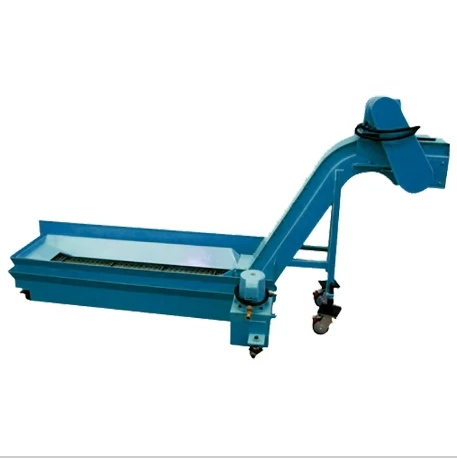chip conveyor
The Role and Importance of Chip Conveyors in Modern Manufacturing
In the fast-paced world of modern manufacturing, efficiency, reliability, and precision are paramount. One of the unsung heroes of the manufacturing process is the chip conveyor. These systems are vital in the machining industry, particularly in settings where metalworking is fundamental. A chip conveyor’s primary function is to transport metal chips and debris generated during machining processes away from the work area. This article will delve into the significance, types, and operational mechanisms of chip conveyors in manufacturing.
Manufacturing processes such as milling, turning, and grinding produce significant amounts of metal shavings, chips, and coolant. These chips can impede production if not efficiently managed. Here is where chip conveyors come into play. By removing waste materials promptly, these conveyors help maintain a clean work environment, ensure machine longevity, and optimize production efficiency. They prevent the accumulation of shavings, which can lead to machine malfunctions, defects in products, and even safety hazards for workers.
Chip conveyors come in various types, each engineered to handle specific kinds of chips and operational needs. The most common types include
1. Drag Chain Conveyors These conveyors utilize a chain that drags the chips along a trough. They are particularly effective for transporting heavy metal chips and can handle both wet and dry wastes.
2. Auger Conveyors These systems use a rotating screw to transport chips upward or horizontally. They are ideal for handling small, granular chips, particularly in operations involving fine machining.
chip conveyor

3. Magnetic Conveyors Employing magnets, these conveyors are excellent for handling ferrous materials. They can lift and transport metal chips without the need for mechanical parts that may wear out.
4. Belt Conveyors These are versatile and commonly used in many manufacturing settings. They can carry a variety of materials and are suitable for lighter chip loads.
The operational mechanism of chip conveyors is as varied as the types available. Generally, a chip conveyor is integrated into the machining workstation, allowing for immediate collection and transportation of waste materials. For example, as a milling machine operates, the chips created during the milling process are funneled into the conveyor system. The conveyor then smoothly transports these chips to a collection point, often a bin or shredder, without disrupting the ongoing production process.
One of the key advantages of implementing chip conveyors is the enhancement of workplace safety. The presence of metal chips on the floor can create slip hazards, leading to potential injuries. By ensuring these materials are promptly removed, chip conveyors contribute to a safer working environment. Additionally, a cleaner workspace can improve employee morale and productivity, as workers can focus better without the distraction of clutter.
Moreover, chip conveyors play an essential role in waste management and recycling within the manufacturing sector. Many companies are now focusing on sustainability, aiming to minimize waste and recycle materials whenever possible. Chip conveyors facilitate the easy collection of metal shavings that can be reprocessed and reused. By recycling these chips, manufacturers can significantly reduce raw material costs and minimize their environmental impact.
In conclusion, chip conveyors are a crucial component of modern manufacturing practices. They enhance operational efficiency, promote safety, and support sustainable production efforts by effectively managing waste materials generated during machining processes. As technology continues to advance, the design and functionality of chip conveyors will likely evolve, further streamlining manufacturing processes and contributing to a more efficient industrial landscape. Investing in quality chip conveyor systems will undoubtedly pay off in terms of productivity and overall operational success, making them an indispensable ally in today’s manufacturing environment.








